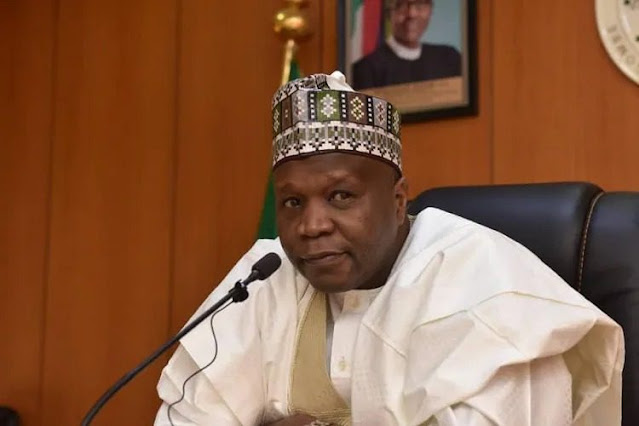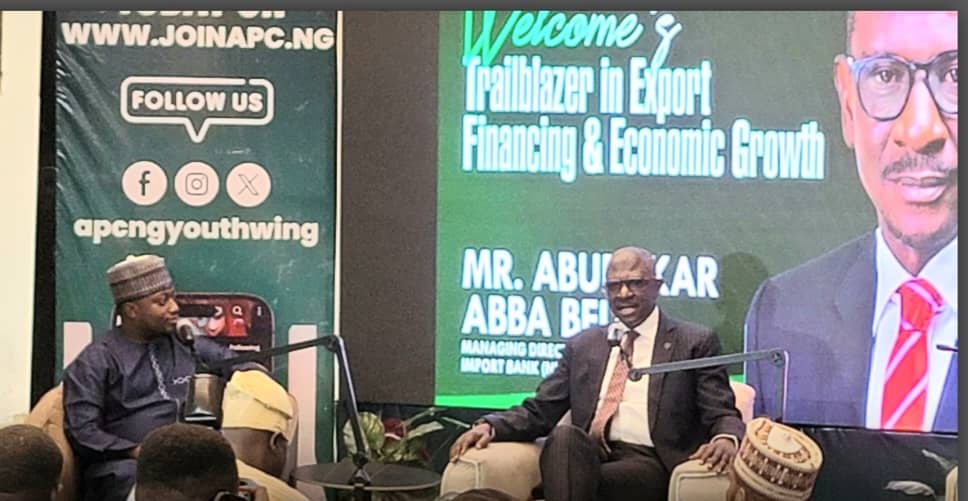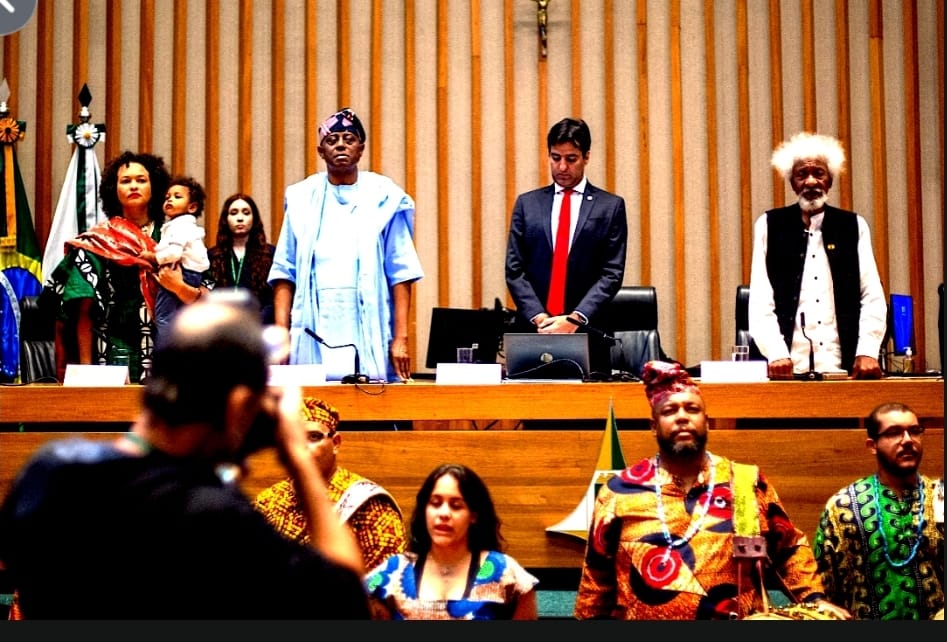On September 2, 2025, a significant milestone was achieved in Nigeria’s healthcare landscape as the Federal Government of Nigeria and the Gombe State Government signed a Memorandum of Understanding (MoU) to facilitate the takeover of the newly constructed General Hospital Kumo, converting it into a Federal Medical Centre (FMC). This landmark agreement, formalized at the Federal Ministry of Health and Social Welfare headquarters in Abuja, marks a pivotal step in enhancing healthcare delivery in Gombe State and the broader Northeast region. The MoU, signed by Governor Muhammadu Inuwa Yahaya on behalf of Gombe State and Dr. Iziaq Salako, Minister of State for Health, on behalf of the Federal Government, underscores a collaborative effort to address critical healthcare challenges while aligning with President Bola Ahmed Tinubu’s Renewed Hope Agenda. This article provides a comprehensive exploration of the MoU, its implications for healthcare in Nigeria, the contributions of key stakeholders, and the broader context of this transformative initiative.
A Landmark Agreement for Healthcare Advancement
The signing of the MoU represents a strategic partnership between the Federal Government and Gombe State, aimed at transforming the General Hospital Kumo into a Federal Medical Centre to ensure its immediate operationalization. The ceremony, held at the Federal Ministry of Health and Social Welfare headquarters, was attended by key figures, including Gombe State Commissioner of Health, Dr. Habu Dahiru, and the Permanent Secretary of the Federal Ministry of Health, Mrs. Daju Kachallom. The event was a testament to the collaborative spirit between the two tiers of government, with both parties expressing optimism about the potential of the new FMC to revolutionize healthcare delivery in the region.
Governor Muhammadu Inuwa Yahaya, who led the Gombe State delegation, described the MoU as a “significant milestone” in the state’s ongoing efforts to expand access to quality healthcare. The General Hospital Kumo, a 200-bed ultramodern facility constructed and equipped by the Yahaya administration, was designed to provide comprehensive healthcare services to the people of Gombe State and beyond. The decision to transfer its management to the Federal Government was necessitated by the upgrade of the former FMC in Gombe to a Federal Teaching Hospital, creating a need for a new federal medical facility to serve the region’s growing healthcare demands.
Dr. Iziaq Salako, the Minister of State for Health, signed the MoU on behalf of the Federal Government, emphasizing the strategic importance of the Kumo FMC as the 16th federal hospital established under the Tinubu administration. He assured that the Federal Government would mobilize resources, personnel, equipment, and operational support to ensure the hospital begins functioning without delay. This commitment reflects the administration’s broader goal of strengthening Nigeria’s healthcare system through targeted investments and partnerships with state governments.
Gombe State’s Healthcare Transformation Under Governor Yahaya
The transformation of General Hospital Kumo into a Federal Medical Centre is a culmination of Governor Yahaya’s visionary leadership in the healthcare sector. Since assuming office in 2019, Yahaya has prioritized healthcare as a cornerstone of his administration’s agenda, recognizing its critical role in improving the quality of life for Gombe’s citizens. The state’s investment in the Kumo hospital, which includes state-of-the-art medical facilities and equipment, demonstrates a commitment to addressing the region’s healthcare challenges, particularly in light of poor maternal and neonatal mortality indices in the Northeast.
Yahaya’s administration inherited a dilapidated healthcare system characterized by underfunded facilities, inadequate equipment, and a shortage of skilled personnel. In response, the Governor implemented a series of reforms aimed at revitalizing the sector. One of the most notable achievements is the provision of at least two fully functional Primary Healthcare Centres (PHCs) in each of Gombe’s 114 political wards. This initiative, achieved through strategic investments and partnerships, has significantly improved access to basic healthcare services, particularly in rural and underserved areas.
In addition to primary healthcare, Yahaya’s administration has focused on upgrading secondary and tertiary facilities. The construction and equipping of General Hospital Kumo is a prime example, as is the remodeling of specialist hospitals in Gombe, Bajoga, and Kaltungo. These efforts have not only enhanced the state’s healthcare infrastructure but also positioned Gombe as a regional hub for medical services. The MoU with the Federal Government builds on these achievements, ensuring that the Kumo facility will serve as a critical referral centre for the entire Northeast and beyond.
Governor Yahaya’s remarks during the MoU signing ceremony underscored the regional significance of the Kumo FMC. “This hospital is not just for the people of Gombe State. Given the central location of Gombe within the subregion, it will serve as a critical referral facility for the entire Northeast and beyond,” he stated. This vision reflects an understanding of Gombe’s strategic position and its potential to drive healthcare improvements across a region that has historically faced significant challenges, including insecurity and limited access to quality medical care.
Federal Government’s Commitment to Healthcare Reform
The Federal Government’s decision to take over General Hospital Kumo and convert it into a Federal Medical Centre aligns with President Tinubu’s Renewed Hope Agenda, which prioritizes comprehensive reforms in the healthcare sector. The agenda aims to address systemic challenges such as inadequate infrastructure, manpower shortages, and poor health outcomes, particularly in underserved regions like the Northeast. The takeover of Kumo hospital was influenced by several factors, including the region’s high maternal and neonatal mortality rates and Gombe State’s demonstrated commitment to improving its healthcare system.
President Tinubu’s approval of the takeover, announced earlier in 2025, was a direct response to Governor Yahaya’s formal request. The decision was informed by data highlighting the poor health indicators in the Northeast, including maternal and neonatal mortality rates that rank among the highest in Nigeria. By converting the Kumo hospital into a Federal Medical Centre, the Federal Government aims to provide a tertiary healthcare facility capable of addressing complex medical needs, training medical personnel, and serving as a referral centre for the region.
The Minister of State for Health, Dr. Iziaq Salako, commended Governor Yahaya for his vision and execution in transforming Gombe’s healthcare system, particularly at the primary care level. “In the health sector, you have consistently set the pace. We appreciate your commitment and partnership. Your administration reflects the very spirit of President Tinubu’s Renewed Hope Agenda in delivering high-impact projects that directly improve the lives of citizens,” Salako stated. This recognition highlights the synergy between the state and federal governments, with both entities working collaboratively to achieve shared goals.
The Federal Government’s commitment extends beyond the Kumo FMC. During the MoU signing ceremony, Salako responded positively to Yahaya’s request for federal intervention in the Snakebite Treatment and Research Centre in Kaltungo, assuring the Governor of the Ministry’s readiness to partner with the state on this critical facility. Snakebites remain a significant public health challenge in the Northeast, and the Kaltungo centre is a vital resource for treating victims and conducting research to improve outcomes. This pledge underscores the Federal Government’s holistic approach to addressing region-specific health challenges.
The Role of the Kumo Federal Medical Centre
The conversion of General Hospital Kumo into a Federal Medical Centre is a game-changer for healthcare delivery in Gombe State and the Northeast. As the second federal medical institution in the state, following the Federal Teaching Hospital in Gombe, the Kumo FMC will serve as a tertiary healthcare facility, offering specialized medical services, training healthcare professionals, and boosting healthcare access across the region. The facility’s 200-bed capacity and ultramodern equipment position it as a state-of-the-art centre capable of addressing a wide range of medical needs.
One of the key roles of the Kumo FMC will be to serve as a teaching hospital for the Federal University of Kashere and Lincoln University, Kumo. This function is critical for addressing Nigeria’s chronic shortage of skilled healthcare professionals. By providing training opportunities for medical students, the FMC will contribute to building a robust healthcare workforce, ensuring that Gombe and the Northeast have the personnel needed to sustain healthcare improvements. Governor Yahaya emphasized this point, noting that the training of medical practitioners at these institutions would enhance the state’s healthcare workforce upon their graduation.
The Kumo FMC’s strategic location in Gombe, a central hub in the Northeast, enhances its potential to serve as a referral centre for neighboring states, including Adamawa, Bauchi, Borno, Taraba, and Yobe. The Northeast has historically faced significant healthcare challenges, exacerbated by insecurity, poverty, and limited infrastructure. The establishment of the Kumo FMC addresses these gaps, providing a facility where patients can access advanced diagnostics, specialized treatments, and emergency care without the need to travel to distant cities like Abuja or Lagos.
Broader Implications for Nigeria’s Healthcare System
The MoU between the Federal Government and Gombe State is a microcosm of the broader reforms needed to transform Nigeria’s healthcare system. Nigeria faces significant challenges in healthcare delivery, including inadequate funding, outdated infrastructure, and a shortage of medical personnel. According to the World Health Organization, Nigeria’s healthcare expenditure per capita is among the lowest globally, and the country struggles with high rates of maternal and neonatal mortality, infectious diseases, and non-communicable conditions.
The Kumo FMC initiative demonstrates the power of collaboration between federal and state governments in addressing these challenges. By leveraging Gombe State’s investment in infrastructure and the Federal Government’s resources and expertise, the partnership maximizes impact while ensuring sustainability. This model of cooperation could serve as a blueprint for other states, particularly those in underserved regions, to strengthen their healthcare systems.
The initiative also aligns with global health priorities, such as the United Nations’ Sustainable Development Goals (SDGs), particularly SDG 3, which aims to ensure healthy lives and promote well-being for all. By improving access to quality healthcare, training medical professionals, and addressing region-specific challenges like snakebites, the Kumo FMC contributes to Nigeria’s progress toward these goals. The focus on maternal and neonatal health, in particular, addresses a critical public health priority, given Nigeria’s high maternal mortality ratio of approximately 512 deaths per 100,000 live births.
Challenges and Opportunities
While the MoU and the establishment of the Kumo FMC are significant achievements, they also highlight the challenges that lie ahead. Sustaining the facility’s operations will require ongoing investment in equipment maintenance, staff training, and operational funding. The Federal Government’s commitment to mobilizing resources is a positive step, but effective implementation will be crucial to ensuring the FMC’s success.
Manpower shortages remain a significant challenge in Nigeria’s healthcare system. The brain drain of medical professionals to developed countries has left many hospitals understaffed, placing immense pressure on the remaining workforce. The Kumo FMC’s role as a training centre offers an opportunity to address this issue, but additional incentives—such as competitive remuneration, improved working conditions, and career development opportunities—will be needed to retain talent.
Another challenge is ensuring equitable access to the FMC’s services, particularly for rural and low-income populations. While the facility’s central location enhances its accessibility, complementary initiatives such as mobile clinics and community health programs will be essential to reaching underserved areas. Gombe State’s success in revitalizing PHCs provides a foundation for such efforts, but scaling these initiatives will require sustained effort and funding.
The Role of Leadership and Collaboration
The success of the Kumo FMC initiative is a testament to the leadership of Governor Yahaya and the collaborative spirit between the Federal Government and Gombe State. Yahaya’s proactive approach to healthcare reform, coupled with his strategic partnership with the Federal Government, has created a model for effective governance. His administration’s investments in primary, secondary, and tertiary healthcare have laid a strong foundation for the FMC’s success, while his advocacy for federal intervention demonstrates a commitment to leveraging external resources for the benefit of his constituents.
President Tinubu’s approval of the takeover and his administration’s broader healthcare reforms reflect a commitment to addressing Nigeria’s systemic challenges. The Renewed Hope Agenda, with its emphasis on high-impact projects and partnerships, provides a framework for sustaining these efforts. The involvement of key figures like Dr. Iziaq Salako and Mrs. Daju Kachallom further underscores the importance of institutional collaboration in achieving meaningful outcomes.
Looking Ahead: A Vision for Sustainable Healthcare
As the Kumo Federal Medical Centre begins operations, it holds the promise of transforming healthcare delivery in Gombe State and the Northeast. To realize this potential, several priorities will shape the path forward. First, ensuring the timely mobilization of resources—personnel, equipment, and funding—will be critical to the FMC’s success. The Federal Government’s commitment to immediate operationalization is a positive step, but sustained oversight and accountability will be needed to maintain momentum.
Second, integrating the FMC into a broader healthcare ecosystem will enhance its impact. This includes strengthening referral pathways between PHCs, general hospitals, and the FMC to ensure seamless care for patients. Investments in digital health solutions, such as electronic health records and telemedicine, could further improve efficiency and access.
Third, addressing region-specific health challenges, such as snakebites and maternal mortality, will require targeted interventions and research. The Federal Government’s pledge to support the Kaltungo Snakebite Treatment and Research Centre is a step in this direction, but additional resources and partnerships will be needed to maximize impact.
Finally, fostering public awareness and community engagement will be essential to ensuring the FMC’s services reach those who need them most. Public health campaigns, community outreach programs, and partnerships with local organizations can help bridge gaps in access and build trust in the healthcare system.
Conclusion
The signing of the MoU between the Federal Government and Gombe State for the takeover of General Hospital Kumo as a Federal Medical Centre is a landmark achievement in Nigeria’s healthcare journey. Under the leadership of Governor Muhammadu Inuwa Yahaya and with the support of President Bola Ahmed Tinubu’s administration, the Kumo FMC is poised to become a beacon of hope for the Northeast, providing quality healthcare, training medical professionals, and addressing critical health challenges. The initiative reflects the power of collaboration, visionary leadership, and strategic investment in transforming lives.
As Nigeria grapples with systemic healthcare challenges, the Kumo FMC serves as a model for what is possible when federal and state governments work together toward a common goal. By aligning with the Renewed Hope Agenda and global health priorities, the FMC has the potential to drive sustainable progress in Gombe State and beyond. With continued commitment and collaboration, the Kumo Federal Medical Centre will not only enhance healthcare delivery but also inspire hope for a healthier, more prosperous Nigeria.








